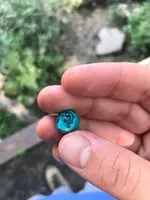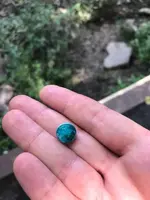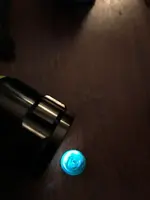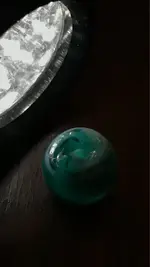Interesting bead. The wavy glass makes me think it looks modern, but blue beads were wildly popular with Native American groups in the 1700-1900's and they were imported from lots of places. (Italy, what is today the Czech Republic, China, India, etc.)
The hole looks drilled and chipped, which is a sign the bead was manually drilled (or at least held while drilled.) It's not a pontil off a bottle, but like one on a bottle it shows that it likely predates some of the modern stuff.
Spend some time on google images, you might find a match. For example, google Huron Indian Blue Bead and you'll see a lot of examples of known blue trade beads.








